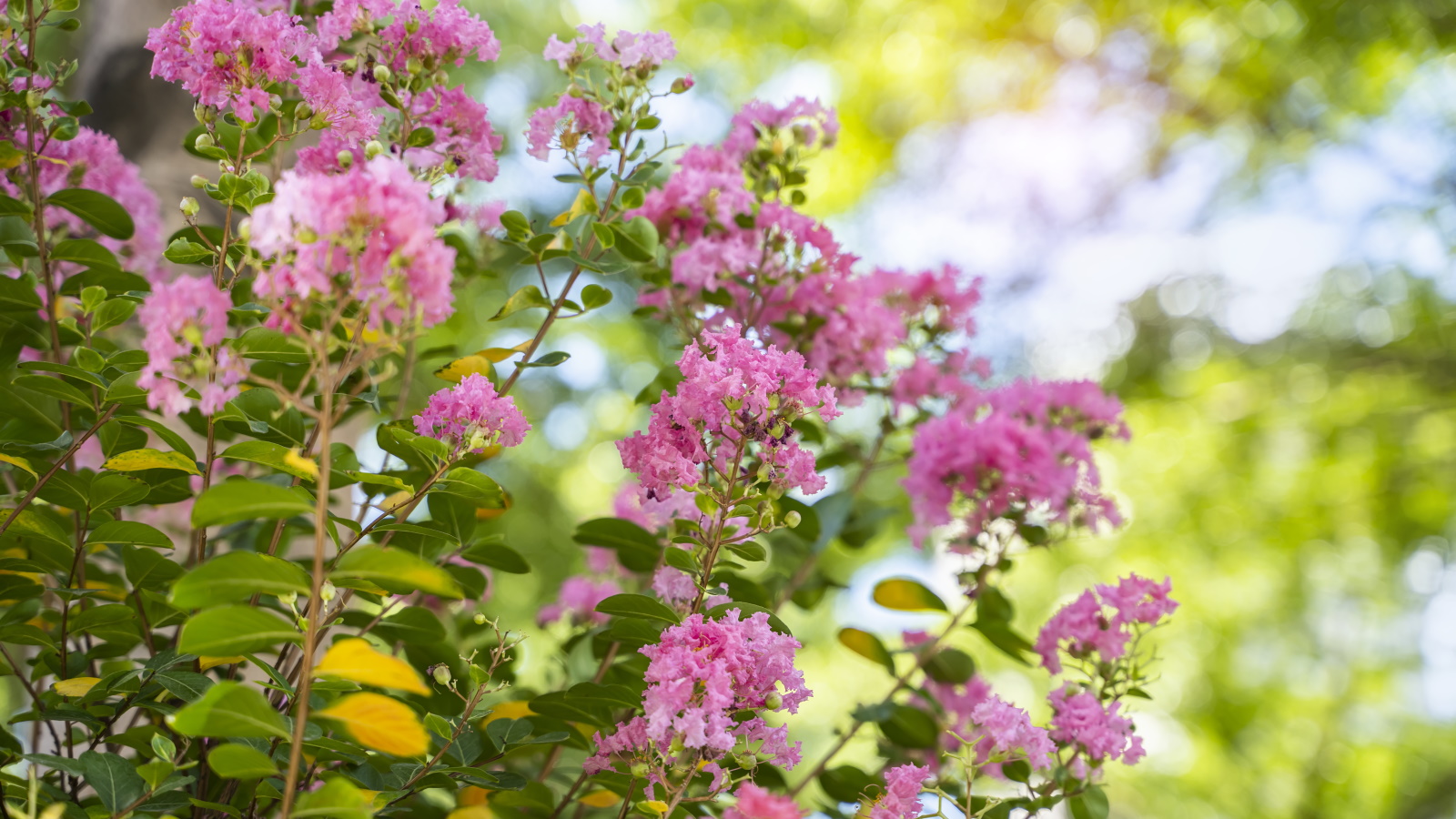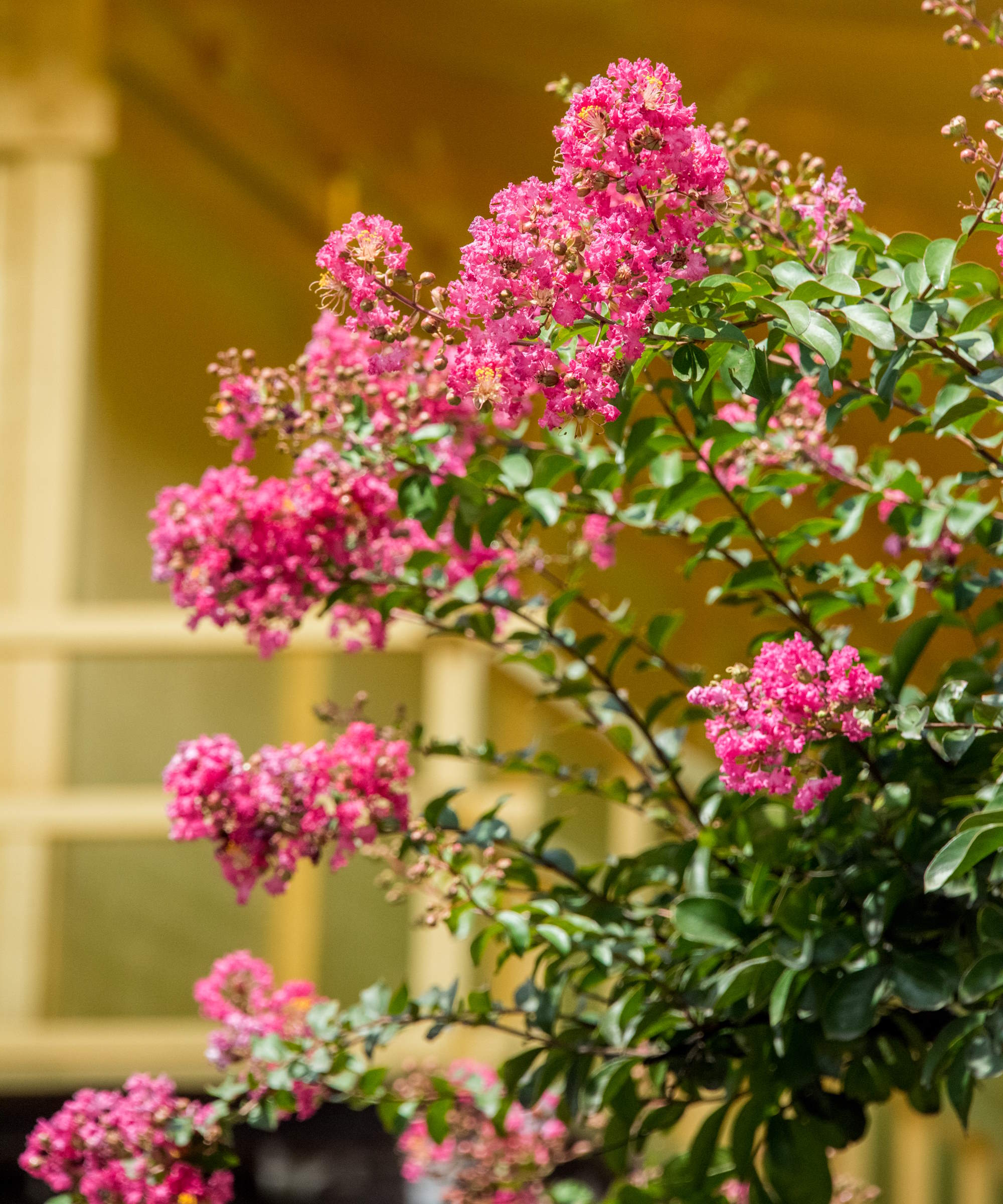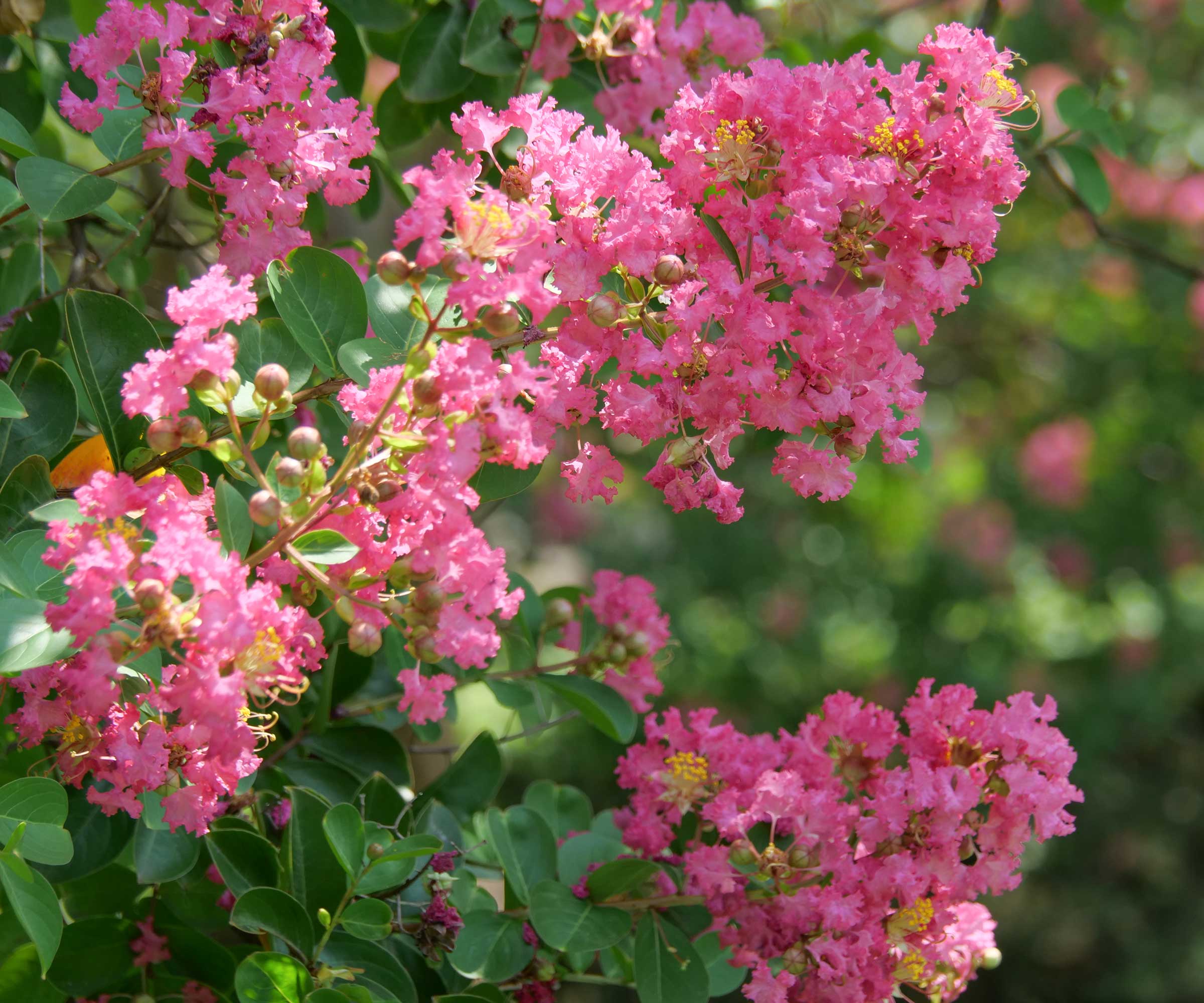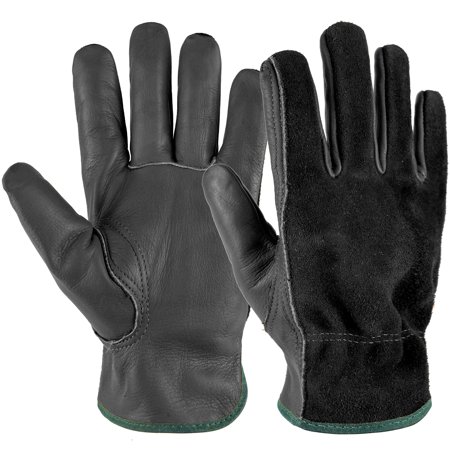Is it necessary to deadhead crepe myrtle flowers? Expert advice for healthy flowering trees and shrubs
While it won't result in repeat blooming, deadheading crepe myrtle flowers will keep your shrubs looking their best


Crepe myrtles are one of those dependable plants that seem to flower for many months in spring and summer. But, once the flower heads start to turn brown, many gardeners ask whether or not they should deadhead crepe myrtle flowers.
Well, it’s not quite a straightforward yes or no. Crepe myrtles bloom on new wood, meaning this year’s growth, but unlike most perennials and annuals, deadheading won’t spark a second flush. However, it can tidy up the overall look of the plant, especially in a small yard or container garden. That said, if your crepe myrtle is tree-sized, reaching upwards of 15 or even 20 feet, it’s probably not worth the effort.
So, the choice is up to you. If you have time and it’s manageable, go ahead. But if you are not able to deadhead crepe myrtle flowers, it is nothing to lose sleep over. Below are a few tips on how to deadhead and prune crepe myrtle in the summer months ahead.

Is it necessary to deadhead crepe myrtle flowers?
Deadheading is one of the most satisfying jobs on the summer gardening checklist. But when it comes to crepe myrtles, the benefits are more cosmetic than necessary.
Still, if the browning flowers are bothering you, or you’re the type who enjoys a spot of gardening maintenance for a few hours a week, here’s what to know about crepe myrtle care.
When and how to deadhead crepe myrtle flowers

In most regions and US hardiness zones, crepe myrtles burst into flower sometime between summer and early fall, depending on the climate and the variety you’re growing.
The crepe myrtle flowering period can be long, sometimes six weeks or more, but as the colorful blooms begin to fade and brown, you can trim the plant to keep it tidy.
Design expertise in your inbox – from inspiring decorating ideas and beautiful celebrity homes to practical gardening advice and shopping round-ups.
To deadhead, use a pair of clean, sharp pruners, such as these highly rated Felco pruners, available from Amazon, to snip each spent crepe myrtle flower stem down to just above a pair of healthy leaves.
It is really that simple. I would suggest taking a garden waste sack with you, collecting the pruned clippings that you can then add to the compost heap.
For smaller or patio-grown crepe myrtles, such as this 'Purple Magic' variety, available from Nature Hills, this will be a quick task. Growing no taller than six or seven feet, this dwarf variety can be easily trimmed and tidied in ten minutes.
However, if the job requires a ladder, it can be slightly more time-consuming. For these taller specimens, you could always use a telescopic pruner, available from Walmart, which can help to tidy larger plants.
If there are any faded blooms you cannot reach, do not worry. Most crepe myrtle pruning is completed during fall and winter, when the plant is dormant and not in active growth.
So, do what you can, trim what you must, and any that you cannot reach now can be trimmed later in the year when the temperature begins to drop.
FAQs
Can I add brown flower clusters to my compost heap?
Yes, all pruned crepe myrtle material can be added to your compost heap. I would suggest cutting any clippings into smaller pieces, no bigger than two inches, to help speed up the composting process.
Should I fertilize my crepe myrtle after deadheading?
When it comes to fertilizing crepe myrtles, remember that these are self-sufficient plants that need little or no fertilizer. For large, established shrubs and trees that are growing in the ground, there is no need to feed. However, specimens growing in pots can benefit from a light feed once or twice during spring, which can help to replenish the nutrients and give plants a boost. I would avoid feeding later in summer, to prevent your crepe myrtle from surging into growth too late in the year.
For more crepe myrtle information, see our guide on why is my crepe myrtle not blooming, with advice to help revive any shrubs or trees that only produce a limited number of flowers.
See also our guide on how to deadhead lilac flowers, to keep your other flowering shrubs in tip-top shape this summer.
Shop pruning equipment

Thomas is a Content Editor within the Gardens Team at Homes and Gardens. He has worked as a professional gardener for both public spaces and private estates, specializing in productive gardening, growing food and flowers. Trained in Horticulture at the Garden Museum, he has written on gardening and garden history for various publications, including The English Garden, Gardens Illustrated, Hortus, The London Gardener and Bloom. He has co-authored a Lonely Planet travel book, The Tree Atlas, due out in 2024.


